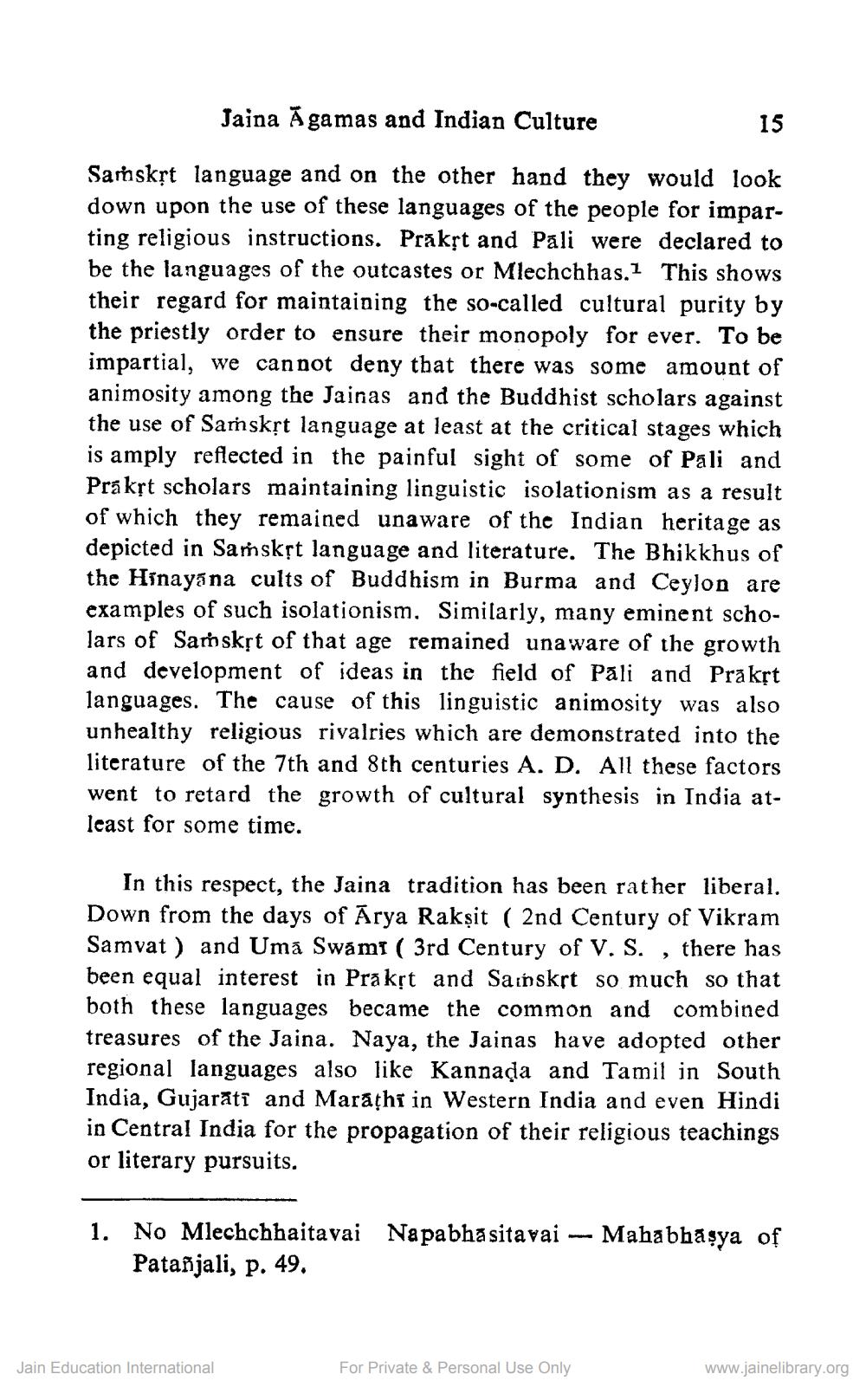________________
Jaina Āgamas and Indian Culture
15
Samskrt language and on the other hand they would look down upon the use of these languages of the people for imparting religious instructions. Prakst and Pāli were declared to be the languages of the outcastes or Mlechchhas. This shows their regard for maintaining the so-called cultural purity by the priestly order to ensure their monopoly for ever. To be impartial, we cannot deny that there was some amount of animosity among the Jainas and the Buddhist scholars against the use of Sarskřt language at least at the critical stages which is amply reflected in the painful sight of some of Pali and Prákst scholars maintaining linguistic isolationism as a result of which they remained unaware of the Indian heritage as depicted in Saṁskst language and literature. The Bhikkhus of the Hinayana cults of Buddhism in Burma and Ceylon are examples of such isolationism. Similarly, many eminent scholars of Sarskst of that age remained unaware of the growth and development of ideas in the field of Pāli and Prakst languages. The cause of this linguistic animosity was also unhealthy religious rivalries which are demonstrated into the literature of the 7th and 8th centuries A. D. All these factors went to retard the growth of cultural synthesis in India atleast for some time.
In this respect, the Jaina tradition has been rather liberal. Down from the days of Ārya Rakșit ( 2nd Century of Vikram Samvat ) and Uma Swami ( 3rd Century of V. S. , there has been equal interest in Prakrt and Sanskrt so much so that both these languages became the common and combined treasures of the Jaina. Naya, the Jainas have adopted other regional languages also like Kannada and Tamil in South India, Gujarati and Marathi in Western India and even Hindi in Central India for the propagation of their religious teachings or literary pursuits.
1. No Mlechchhaitavai Napabhasitavai - Mahabhașya of
Patañjali, p. 49.
Jain Education International
For Private & Personal Use Only
www.jainelibrary.org




